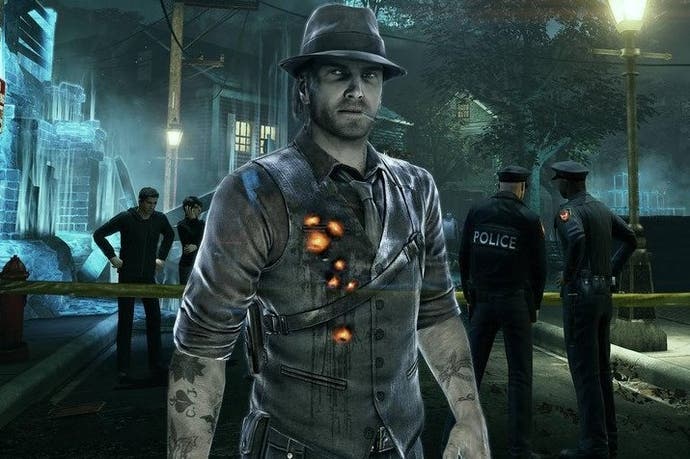Face-Off: Murdered: Soul Suspect
Digital Foundry investigates the 60-30fps divide in Airtight Games' supernatural action-adventure.
Murdered: Soul Suspect is the latest title that shows a remarkable frame-rate difference between the PS4 and Xbox One, with Airtight Games' release harking back to the 60/30fps divide seen most dramatically in Square-Enix stable-mate, Tomb Raider Definitive Edition. In this case of this release, it's an interesting technical decision that has significant consequences for the experience on Sony's console - both good and bad - and raises an interesting question. Does a mammoth increase in raw frame-rate significantly improve the gameplay experience for this type of game, and are the drawbacks with its specific implementation enough to make Xbox One's capped 30fps the better choice?
As an adventure game with mild action and stealth elements that expand upon the core exploration and crime-scene investigation features, low-latency controls aren't required to really enjoy Murdered: Soul Suspect. However, while running at 60fps still benefits gameplay by providing silky-smooth motion that lower frame-rates simply cannot match, there's definitely a sense that the raw performance throughput of the PS4 game comes at the expense of overall polish. The DirectX 11 Xbox One and PC versions both feel pretty solid, while the faster PS4 title exhibits more noticeable gameplay and rendering bugs, making things feel a little rough around the edges - despite the obvious love and attention that has gone into crafting the atmospheric environments and interesting premise.
Things start off promisingly enough with both console versions implementing a native 1080p presentation, and this is backed up by a light layer of post-process anti-aliasing that subtracts a small amount of shimmer from edges without eroding too much sharpness from the overall image. Some texture blur is present, and while this robs the artwork of its most intricate details, the overall impact is milder and less intrusive than many of the post-process solutions we've seen in the past.
On the PC we elect to use 4x MSAA in order to provide the sharpest image quality possible without impacting upon texture detail. However, the results are unimpressive at best: coverage is generally broken across the scene with few surfaces actually benefiting at all from a reduction in jaggies. As with other Unreal Engine 3 titles, sampling is done early on in the rendering pipeline before most of the lighting and post-process effects are added, making the use of multi-sampling mostly redundant. Thankfully, we have other options available in the form of three FXAA variants, along with the bizarrely monikered "4f8xEQAA" and "4f16xEQAA" options. While we found the FXAA modes a little too blurry, switching to 8f16xAA provided us with slightly better overall coverage than the multi-sampling, without giving us any noticeable hit in performance on our Core i5 and GTX 680 gaming rig.
"Airtight Games delivers a native 1080p presentation across both PS4 and Xbox with a decent post-process AA solution."
Alternative comparisons:
Built using the tried and tested Unreal Engine 3, Murdered: Soul Suspect deploys a variety of post-process effects, lighting, and shaders in order to create a distinctly moody atmosphere for the game's eerie setting - a small North American town called Salem, known for its historical connection to various supernatural phenomena. Characters benefit from some fairly impressive GPU effects work, courtesy of a light layer of sub-surface scattering in order to simulate the way their skin reacts to the surrounding lighting. However, beyond this the game takes a somewhat more familiar approach to rendering in line with PC versions of last-gen releases. In essence, Murdered: Soul Suspect feels like a graphically advanced version of a last-gen title - impressive in some ways, but with its legacy underpinnings still clearly in evidence.
The range of effects carries over nicely across all three platforms, with motion blur, depth of field, light shafts, and a light touch of chromatic aberration creating an eerie cinematic feel to the proceedings. Full-resolution alpha buffers are in play - thus avoiding any unwanted jaggies around intersecting geometry - while a large part of the world utilises shadows that are baked into the artwork, again cutting back on the amount of artefacts on display. As a result, first impressions reveal a very closely matched multi-platform port across both new consoles and the PC with very few differences between them in terms of the more flashy rendering features.
However, on a more fundamental level there are a few things that obviously stand out when exploring the gloomy town of Salem. Firstly, Unreal Engine 3 relies on streaming textures and other assets in order to better manage memory usage and the overall rendering load. Transitions between LOD models are generally handled a touch more quickly on the PS4 and PC compared to the Xbox One, but texture streaming is noticeable more buggy on Sony's system, leading to low-resolution artwork displayed on-screen, sometimes on a permanent basis. Texture filtering is also palpably worse on the PS4: both PC and Xbox One versions of Soul Suspect utilise 16x AF (anisotropic filtering), while the effect on Sony's console is noticeably lower, resulting in details becoming blurred when view from a distance. Meanwhile, PC owners get higher-resolution real-time shadows, although it has to be said that this element of the visual make-up looks quite rough on all three platforms.
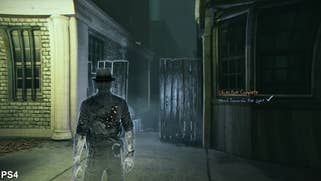
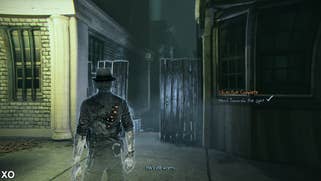
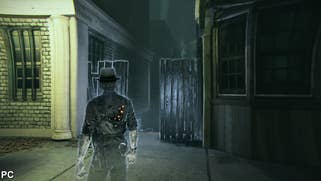



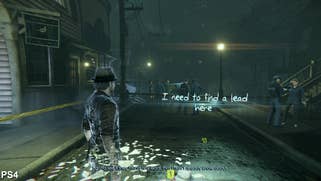
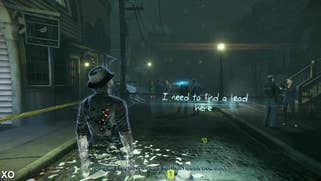
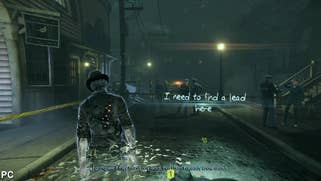


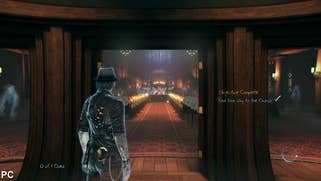
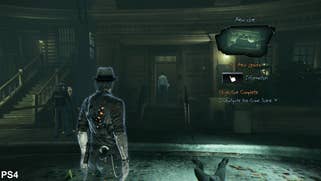
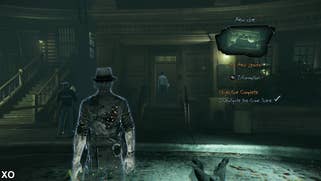
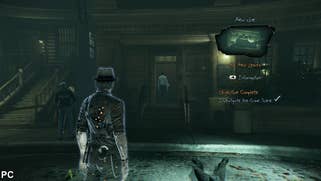
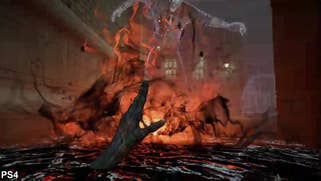

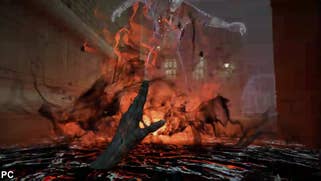
In other areas, the graphical differences that crop up on occasion appear to be caused by rendering bugs rather than hardware-related issues. Elements such as missing shadows in a few locations on the PS4, the occasional absence of SSAO on the Xbox One (the effects also looks like it may have been reduced), and the random inconsistencies with lighting between all three platforms, suggest that the game engine isn't quite as polished and optimised as it could be.
In terms of performance Murdered: Soul Suspect marks a clear gap between the PS4 and Xbox One, with Airtight Games using the extra GPU power on offer in Sony's console to deliver higher peak frame-rates, potentially allowing for a smoother and more enjoyable gameplay experience. In this case we are looking at a targeted 60fps on the PS4 up against a more common, locked 30fps deployed on the Xbox One. The set-up on the PS4 is pretty simple: Airtight Games aims for 60fps and employs the use of adaptive v-sync to help deliver frames to the screen as quickly as possible when the engine is under load. When the frame-rate drops below the desired 60fps metrics, the game tears, thus potentially allowing for higher frame-rates but at the expense of image consistency.
In gameplay terms, this solution actually works pretty well in this particular scenario: for the most part Soul Suspect provides a frequent 60fps update that looks and feels very smooth, but the appearance of longer draw distances and more complex scenery heavily impacts on performance, with near constant tearing creating a juddering experience. In direct comparison the Xbox One game is certainly more consistent: a mostly solid 30fps is delivered with only a few minor blips in between (usually due to brief pauses caused the game's streaming system), although the weightier controls don't quite produce the same 'effortless' feel as found on the PS4 version.
So in terms of gameplay the Sony console takes the lead by brute-forcing its way into delivering a much higher frame-rate, but when it comes down to the cut-scenes we find the opposite is true with variable frame-rates and screen tear heavily distracting from the moody cinematic scenes and the spooky noir atmosphere. The issue here is consistency: some cut-scenes deliver a flawless 60fps presentation while others descend into tear-heavy 30fps territory, and the switch between the two is jarring to say the least - it's an odd mixture that doesn't look quite right.
"Murdered: Soul Suspect is built upon the tried and tested Unreal Engine 3, feeling very much like an enhanced last-gen title."
In comparison, the Xbox One version of Soul Suspect adopts a capped 30fps presentation that remains solidly v-synced for 99 per cent of the time, with only one or two dropped or torn frames occasionally cropping up. For the most part a locked 30fps is assured, but scenes featuring longer draw distances or multiple characters on-screen can cause the frame-rate to drop down to 20fps for sustained periods. In effect, we are dealing with double-buffer v-sync: it's either a locked 30fps or a straight drop down to 20fps with nothing in between, causing some awful slowdown when performance is impacted. But on the whole this part of the experience is generally more consistent on the Xbox One compared to on Sony's console, and this helps to keep you better immersed in following the events in the game.
One interesting thing about the cut-scenes is that Airtight Games has chosen to split them between real-time rendered sequences and FMV clips using pre-recorded in-engine gameplay quality settings, while maintaining the basic performance profile of each console. This means that dropped frames and near-constant tearing appears in the PS4 video clips while on the Xbox One these are v-synced and capped at 30fps with little in the way of performance issues. Overall video quality is pretty poor across all three platforms, with compression artefacts visibly cropping up in effects-laden scenes with lots of constantly changing imagery, but these appear worse on the PS4 with macroblocking robbing some sequences of fine detail much more often. Both PS4 and Xbox One use dual-layer Blu-ray discs that hold a maximum of 50GB's worth of data, so it's hard to understand exactly why poorer quality encodes are present on the Sony platform.
Moving onto PC performance, and it's no surprise to learn that we could power past the PS4's variable frame-rates with our trusty Core i5 and GTX 680 combo. However doing this in Soul Suspect isn't without a pretty irritating drawback: the game only offers up a double buffer v-sync option - capping the frame-rate at 30fps - so to achieve a steady 60fps this needs to be disabled. Doing so grants a slick gameplay experience and a noticeable boost in the speediness of the controls, at the expense of frequent tearing normally manifesting in the top half of the screen. Despite this, there was little in the way of perceived judder, with torn frames manifesting as a smooth wobble located nearer the top of the image - although a mild stutter occasionally manifested when quickly panning the camera.
Interestingly, it is possible to obtain higher-than-30fps frame-rates with v-sync enabled, but this is usually restricted to random occurrences as you explore the environments in less complex areas - the v-sync option appears to be a little buggy, so any extra gains in performance come across as brief flutters of smoothness followed by a jarring transition back to the established 30fps standard.
"PlayStation 4 takes the performance lead, but the resultant screen-tear is especially off-putting during cut-scenes."
Murdered: Soul Suspect - the Digital Foundry verdict
From a technical standpoint Soul Suspect displays some curious choices when it comes down to the rendering set-up across both new consoles. Airtight Games' decision to go with an uncapped frame-rate on PS4 provides a tangible boost to temporal resolution and controller response during gameplay, but the impact on cut-scenes results in a distinctly uneven experience that doesn't show the game's more cinematic moments in the best light. It's a really tough one to call, but on balance it's the console version we'd take given the choice, but the drop to 30fps isn't at all game-breaking on Xbox One, and there is the feeling of a much more consistent experience overall. It's just rather odd that the PS4 cut-scene tearing issue wasn't spotted and addressed during QA - and we hope that this, along with other issues, will be patched in due course.
Traditionally, Unreal Engine titles run smoothly with modest spec computers, and we found this to be the case with the PC version of Soul Suspect as well. The use of v-sync/30fps cap combo in itself delivers a more consistent run of play than either of the new consoles, and in addition to that we also get better image quality in the form of 8f16xAA anti-aliaing. In addition, crisp-looking textures and cleaner shadows allow us to experience the moody and atmospheric world of Soul Suspect at its best. Our only real issue with the PC release lies with the 30fps cap when applying v-sync: you're either stuck at 30fps or presented with a faster-than-60fps update complete with tearing. In this case we'd recommend enabling triple-buffering via the GPU control panel in order to maintain image consistency while still delivering the experience expected from UE3 titles running on a mid to high-end PC.
Overall, it's easy to see that Murdered: Soul Suspect was a labour of love for Airtight Games, particularly with regards to the title's distinct moody feel, and quirky Japanese influences - Ghost Trick immediately comes to mind. However the end result is something that currently feels quite unpolished and in need of a post-launch patch. Graphical glitches and frame-rate issues are one thing, but there are also a few game-breaking bugs that randomly occur throughout Soul Suspect that really need to be sorted. These range from vital evidence not activating during a crime-scene investigation to items failing to be recorded after being picked up. We only encountered one of these issues throughout our Xbox One capture session, but posts on the game's official forums indicate that these problems are present multiple versions of the game. Hopefully an update will be issued soon to address some of these problems.
